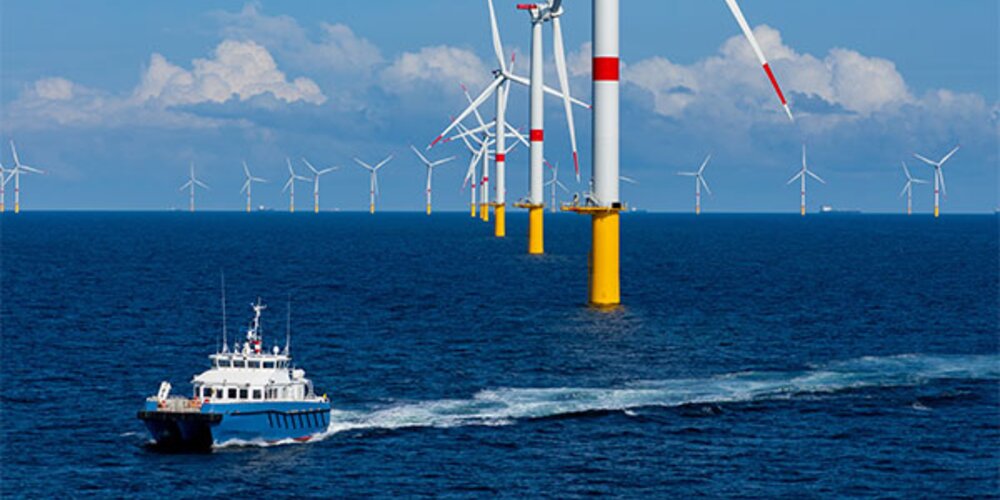Browse our services
Explore how Brookes Bell can help you
Find an expert
Meet our team, find and expert and connect
Contact us
Get in touch, we're here to help

Edison Chouest Offshore (ECO) has commenced construction of the U.S. offshore wind industry’s first ever mini crew transfer vessel (CTV) based on a design provided by the UK’s Chartwell Marine.
The vessel - which is set to go into operation in the summer of 2024 - will be deployed across the Revolution Wind, South Fork Wind, and Sunrise Wind offshore wind farms off the East Coast of the U.S. These wind farms are being operated by a joint venture between Ørsted and Eversource Energy.
It is expected that ECO’s CTV will enter service at the same time as ECO Edison - the first-ever American-built service operation vessel (SOV), with the CTV acting as the ‘daughter craft’ to the SOV.
The construction of these vessels marks a major milestone for the U.S. offshore wind industry which has long been concerned that a lack of Jones Act compliant vessels could stymie offshore wind farm development.
The genesis of the design, which comes courtesy of Southampton-based Chartwell Marine, is the demand from the U.S. offshore wind market for low-emissions, cost-effective support vessels. The design, which centres on a catamaran hull, is optimised to provide efficient fuel use, and stability and manoeuvrability in choppy waters.
It is expected that the CTV will be powered by the Volvo Penta IPS (integrated propulsion system) which will provide both high power and performance coupled with comfort for the vessel operators. The system also allows for forward-facing, twin counter-rotating propellers with an individually steerable IPS under the hull.
Commenting on the new CTV vessel Andy Page, MD of Chartwell Marine, said:
“This vessel is the small but essential chain connecting SOVs and turbines together. Engineers need to safely transition from larger vessels to turbines quickly and safely, and we set out to design an agile and streamlined vessel that has both bases covered.
But, it’s not a one-size-fits-all. Turbines come in different configurations, with different requirements for effective crew transfer. That’s why we collaborated with Ørsted to thoroughly test and tweak our design to the joint venture portfolio’s particular needs”.
As the story above illustrates, the race is now on to create more Jones Act compliant vessels to support the U.S.’ growing offshore wind industry.
If you’re involved in the design and development of these vessels, then speak to 3D Marine today. Our team is able to provide a wide range of services including marine consulting and surveying, marine engineering, naval architecture and more.
For more maritime and energy industry insights, news and information, read the Brookes Bell News and Knowledge Hub…
Zero-Emission Tugs to Be Developed and Built by UK Consortium | U.S. Offshore Wind Project Pipeline Exceeds 51 MW | World’s Deepest Offshore Wind Foundation Installed